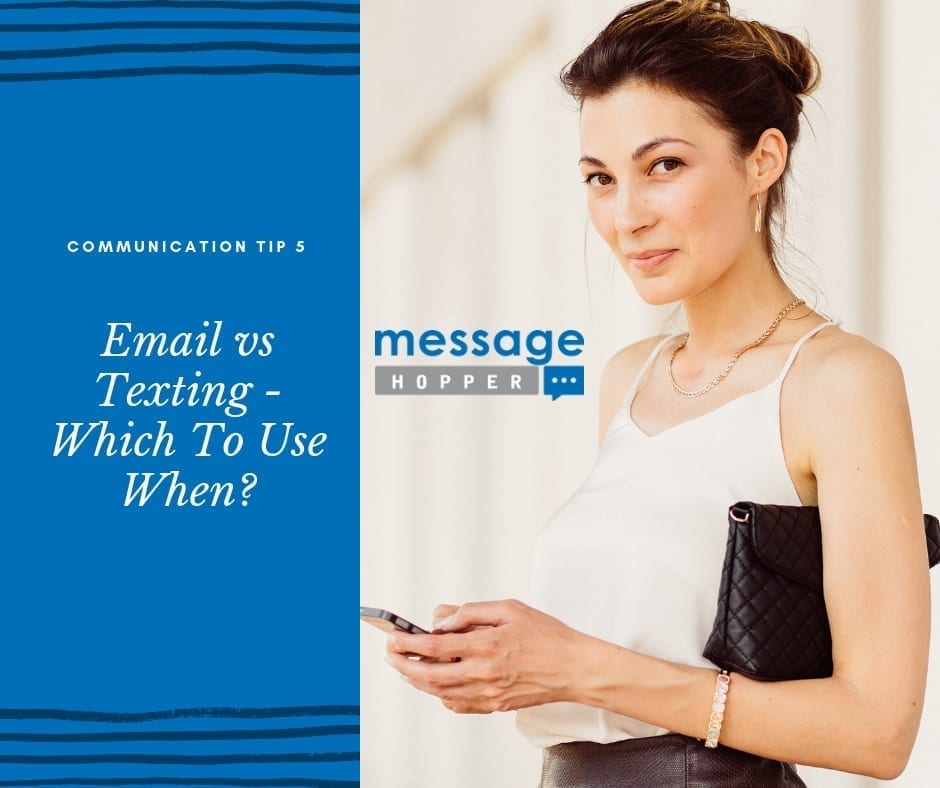There’s a dizzying array of communication platforms and options today. We need to communicate with friends, colleagues, staff, superiors, and customers. But which way is best for a given situation? (2 min 22 sec read)
Customers especially want and expect to be able to reach our business in a way that is most convenient TO THEM. How can a business keep up?

Phone & email have long been the main options for getting in touch. But times are always changing. Remember faxes? Snail Mail? Telegrams? Carrier pigeons? With each evolution in communication, one thing is clear: speed and responsiveness continue to be central to progress.
Until we are plugged into the Matrix or can communicate telepathically, here’s a rundown of the top ways to communicate with others and which medium might be best in any given situation. This list focuses on 2-way communication, not simply information broadcasting – that’s a whole other kettle of fish.
What are the most common communication channels and which should we use when?
Let’s dive in. Here’s a quick primer. Feel free to add your thoughts in the comments below.
When Email is Best
* when longer, more detailed messages are needed
* a reply is not urgent or critical (can wait 24 hours or more)
* message includes multiple links or images
* multiple people need to participate in the conversation or receive the same message
* want to keep or save a message history for referencing later. Always use to a descriptive subject line in your emails!
When Fax is Best
* When there’s no other confidential way to get your prescription from your doctor to your pharmacist (there are new software and tools for this now)
* You still live in the 1990s (seriously, faxing has gone the way of the telegram. Time to find a better option!)
When Text is Best
* sharing shorter bits of information
* need interaction through multiple short exchanges (Eg. I can’t make it today, can we reschedule?)
* immediate feedback would be valuable and provide a better customer service experience
* value of the information shared is valuable at the moment, but decays over time (Eg. where are we meeting? This is a reminder of your appt at 2 pm with Dr. Smith, etc…)
* info shared (link, card, picture, calendar item, map directions) is most easily opened directly on the customer’s phone
* you want to combine automated responses and augment those with live interactions (if necessary) in the same user experience (build your own using services like Twilio or Signal Wire. Or opt for a done for you solution like Message Hopper)
* when the phone is impractical due to scheduling, timing, or situation (eg. back and forth conversation needed but the customer is in a meeting or your phone line is overly busy)
When Website Form is Best
* nature of the information request is not time-sensitive or urgent (eg. can take 24 hrs or more to get a response)
* the person is navigating your website and has a question
When Social Channels or Other Tools are Best (eg. Messenger, Slack, etc…)
* you’re very active on social
* you’ve configured some form of auto-response to manage customer expectations on response-time
* the customer is navigating social media
* for Slack and other tools:
* the conversation thread is best kept organized
* multiple people might need to be involved in the conversation now, or want to view it later
When Chatbot is Best (or Website Live Chat)
* the customer is navigating your website or social channel
* you want to provide timely information or information based on their behavior (what they are seeing, what they’ve seen)
* you want to combine automated responses and live interactions in the same user experience (using a service like ManyChat, Engati, and others like them)
I see chatbots holding a lot of promise in the future. You can build them from the ground up to be scalable and to integrate with multiple platforms. Integration is key today as so many businesses already have their own software preference or customized solution.
How about you? What’s your preferred form(s) of communication with a) your customers and b) the companies you personally deal with? Comment below and I will update this article with the best answers received.

